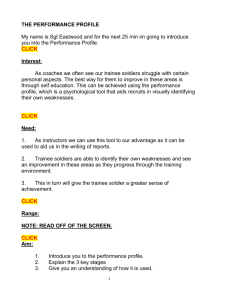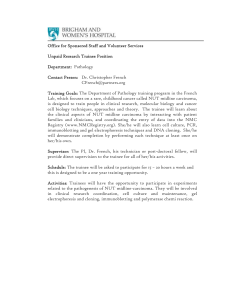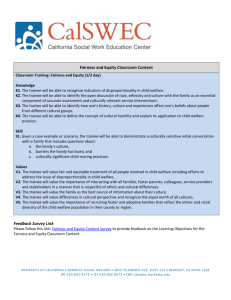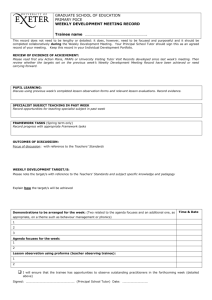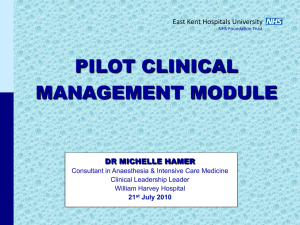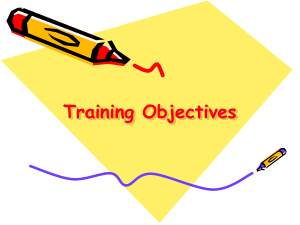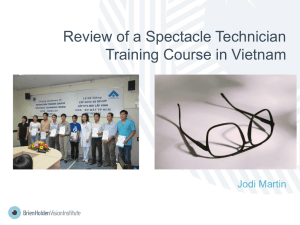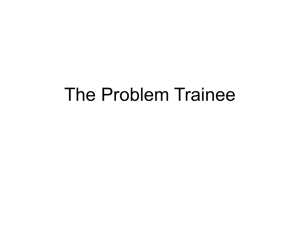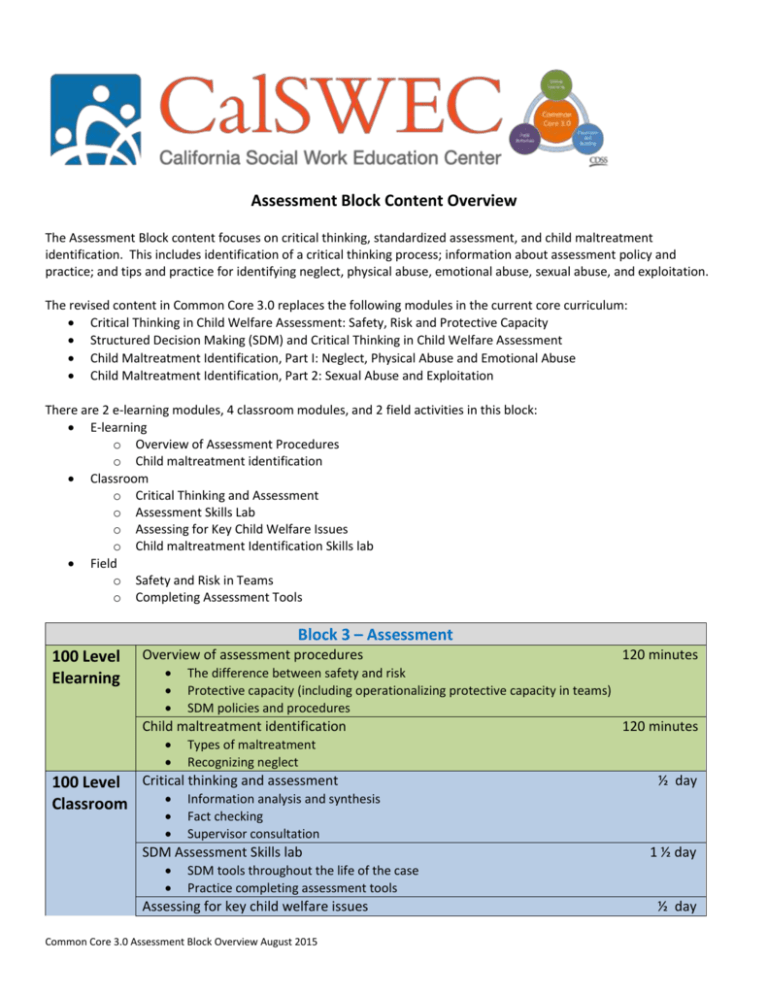
Assessment Block Content Overview
The Assessment Block content focuses on critical thinking, standardized assessment, and child maltreatment
identification. This includes identification of a critical thinking process; information about assessment policy and
practice; and tips and practice for identifying neglect, physical abuse, emotional abuse, sexual abuse, and exploitation.
The revised content in Common Core 3.0 replaces the following modules in the current core curriculum:
Critical Thinking in Child Welfare Assessment: Safety, Risk and Protective Capacity
Structured Decision Making (SDM) and Critical Thinking in Child Welfare Assessment
Child Maltreatment Identification, Part I: Neglect, Physical Abuse and Emotional Abuse
Child Maltreatment Identification, Part 2: Sexual Abuse and Exploitation
There are 2 e-learning modules, 4 classroom modules, and 2 field activities in this block:
E-learning
o Overview of Assessment Procedures
o Child maltreatment identification
Classroom
o Critical Thinking and Assessment
o Assessment Skills Lab
o Assessing for Key Child Welfare Issues
o Child maltreatment Identification Skills lab
Field
o Safety and Risk in Teams
o Completing Assessment Tools
Block 3 – Assessment
100 Level
Elearning
Overview of assessment procedures
The difference between safety and risk
Protective capacity (including operationalizing protective capacity in teams)
SDM policies and procedures
Child maltreatment identification
½ day
Fact checking
Supervisor consultation
SDM Assessment Skills lab
120 minutes
Types of maltreatment
Recognizing neglect
100 Level Critical thinking and assessment
Information analysis and synthesis
Classroom
120 minutes
1 ½ day
SDM tools throughout the life of the case
Practice completing assessment tools
Assessing for key child welfare issues
Common Core 3.0 Assessment Block Overview August 2015
½ day
Special issues in assessment (red flags for Intimate Partner Violence, Mental Health,
Substance Abuse)
Assessing for well-being factors (health, education supports, mental health)
Understanding the purpose of using mental health screening tools
Child maltreatment identification skills lab
Skills practice identifying neglect, physical abuse, sexual abuse, neglect using a framework
Safety and risk in teams
Field
200 Level
2 hours
Observe safety and risk case presentation in a team setting
Practice completing a safety plan with a team
Completing assessment tools
1 day
2 hours
Practice completing safety and risk assessment tools
Classroom - Knowledge and skill reinforcement
1 day
Learning Objectives
Online Module: Overview of Assessment Procedures (120 minutes)
Knowledge
K1. The trainee will be able to describe the following definitions as they apply to child protective services:
a. Safety
b. Risk
c. Protective Capacity
K2. The trainee will be able to identify the stages in CWS cases where assessments of safety, risk, and protective
capacity must occur.
K3. The trainee will be able to describe the following SDM assessment tools and their respective purposes:
a. SDM Hotline Tools: informs referral acceptance, in person-response, response time and differential
response (if applicable)
b. SDM Safety Assessment Tool: informs presence of safety threats, protective capacities and whether a
child needs to be placed
c. SDM Risk Assessment Tool: informs whether or not to close a referral or promote to a case.
d. SDM Family Strengths and Needs Assessment (FSNA) Tool: prioritizes strengths and needs for case
planning
e. SDM In-Home Risk Reassessment Tool: informs whether or not to close a case.
f. SDM Reunification Reassessment Tool: informs whether to return a child home.
K4. The trainee will be able to identify the elements of an effective safety plan.
K5. The trainee will be able to define and identify the factors to consider in assessing Minimum Sufficient Level of
Care.
K6. The trainee will be able to describe three strategies for developing safety plans in a team setting.
K7. The trainee will be able to describe the strategies for incorporating existing protective capacities and
community supports in safety planning in a team setting.
Values
V1. The trainee will value recognizing and acknowledging self-advocacy from children, youth, young adults or other
family members during the team meeting process.
V2. The trainee will value the role of the community and the family’s social support network in enhancing safety,
decreasing risk and increasing protective capacity.
Common Core 3.0 Assessment Block Overview August 2015
2
Online Module: Child Maltreatment Identification (120 minutes)
Knowledge
K1. The trainee will be able to identify indicators of:
a. Physical abuse
b. Neglect
c. Emotional abuse
d. Sexual abuse and exploitation
K2. The trainee will be able to identify how cultural factors can affect identification of child maltreatment.
K3. The trainee will be able to identify the impact of family roles and interactions on identification of sexual abuse.
K4. The trainee will be able to identify:
a. The associated sections of the Welfare & Institutions Code Section 300 (a) - (j)
b. The legal basis for identifying physical abuse, sexual abuse and exploitation under California law
specifically as defined by the Penal Code
Values
V1. The trainee will value making decisions consistent with the legal definitions described in the Penal Code and
Welfare & Institutions Code Section 300 (a) - (j).
Classroom Training: Critical Thinking and Assessment (1/2 day)
Knowledge
K1. The trainee will be able to describe a process to analyze and synthesize information from multiple sources
when conducting a child welfare assessment.
K2. The trainee will be able to describe how life experiences, personal values, and bias may affect determination of
minimum sufficient level of care (MSLC) in assessing safety and risk and developing safety plans.
K3. The trainee will recognize the role of reflective practice in child welfare assessment.
Skill
S1. Given a case scenario, the trainee will be able to check facts and analyze factors relevant to an assessment of
safety, risk, and protective capacity which includes information from the reporting party, extended family
members, case records, and other collateral sources.
S2. The trainee will be able to identify and resolve effects of their own life experiences, personal values, and biases
in establishing MSLC and assessing safety and risk.
Values
V1. The trainee will value obtaining consultation as needed to conduct an effective assessment.
V2. The trainee will value fact checking in child welfare assessment.
Common Core 3.0 Assessment Block Overview August 2015
3
Classroom Training: Assessment Skills Lab (1 ½ Day)
Knowledge
K1. The trainee will be able to recognize key definitions used in the SDM assessment system, including
a. Excessive discipline
b. Primary caregiver
c. Policy override
d. Substance abuse
Skill
S1. Given multiple case scenarios, the trainee will be able to apply SDM definitions and complete the following
tools:
a. SDM Hotline Tools
b. SDM Safety Assessment Tool
c. SDM Risk Assessment Tool
d. SDM Family Strengths and Needs Assessment (FSNA Tool)
e. SDM In-Home Risk Reassessment Tool
f. SDM Reunification Reassessment Tools
Values
V1. The trainee will value how the SDM model, SDM tools and definitions were developed in order to appreciate
the accuracy and consistency of recommended decisions.
Classroom Training: Child Maltreatment Identification Skills Lab (1 day)
Knowledge
K1. The trainee will be able to identify physical, emotional, and behavioral characteristics of children who have
been maltreated.
K2. The trainee will be able to identify cultural practices that may be mistaken for child maltreatment.
K3. The trainee will be able to identify when to seek consultation from agency resources medical staff, mental
health professionals, law enforcement, or forensic experts during child maltreatment identification efforts.
Skill
S1. The trainee will be able to use the child maltreatment indicators to identify child maltreatment in a vignette.
S2. Using a vignette, the trainee will be able to identify cultural factors that affect child maltreatment
identification, including distinguishing child maltreatment from cultural factors.
S3. Using a vignette, the trainee will be able to identify developmental factors that affect child maltreatment
identification.
S4. Using a vignette, the trainee will critically analyze motivation, credibility and the information provided by family
members and others regarding sexual abuse.
Values
V1. The trainee will value using a strength-based model of practice that provides a holistic view of the family as
part of the child maltreatment identification process.
V2. The trainee will value an understanding of how poverty, lack of education, community distress and
environmental stressors can contribute to risk for child maltreatment.
V3. The trainee will value working collaboratively with agency resources, law enforcement and medical, mental
health, and forensic experts in identifying child maltreatment.
Common Core 3.0 Assessment Block Overview August 2015
4
Classroom Training: Assessing for Key Child Welfare Issues (1/2 day)
Knowledge
K1. The trainee will be able to identify how assessment can be impacted by:
a. Caregiver substance abuse
b. Mental health issues
c. Intimate partner violence
d. Trauma and deprivation
K2. The trainee will be able to identify the role of teaming with experts in working with families to assess issues
related to:
a. Caregiver substance abuse
b. Mental health issues
c. Intimate partner violence
d. Trauma and deprivation
K3. The trainee will be able to describe how cultural differences and historic trauma can affect assessment and the
assessment relationship.
K4. The trainee will be able to recognize how the use of authority can affect the process of conducting an
assessment.
Skill
S1. Using a vignette the trainee will be able to conduct a balanced and accurate assessment that focuses on child
and youth safety and risk and addresses:
a. Caregiver substance abuse
b. Mental health issues
c. Intimate partner violence
d. Trauma and deprivation
e. Child and youth well-being
S2. Using a vignette, the trainee will be able to describe a process for consulting and collaborating with health care
providers, educators, mental health providers, and other community members regarding medical needs,
educational needs and mental health needs of foster children and foster youth.
S3. Using a vignette, the trainee will be able to differentiate between child and youth safety and risk of
maltreatment to a child or youth in a situation involving substance abuse.
Values
V1. The trainee will value being sensitive to factors that affect assessment such as:
a. Fair, careful, and transparent use of authority
b. Establishing productive relationships with families
c. The possible history of oppression experienced by the family
V2. The trainee will value assessment as an ongoing collaborative process with families and their support networks
/ family teams.
V3. The trainee will value a rigorous assessment process that that considers the family’s strengths, protective
capacities, and safety needs in the effort to achieve child and youth safety.
Field Activity: Completing Assessment Tools (2 hours)
Knowledge
K1. The trainee will be able to identify county protocols related to the use of the SDM assessment system.
Skill
Common Core 3.0 Assessment Block Overview August 2015
5
S1. The trainee will be able to apply SDM definitions and complete the following tools:
a. SDM Safety Assessment Tool
b. SDM Risk Assessment Tool
Values
V1. The trainee will value following SDM policies and county protocols for the SDM assessment system.
Field Activity: Safety and Risk in Teams (2 hours)
Knowledge
K1. The trainee will be able to identify the safety and risk assessment information that teams need to develop
safety plans.
K2. The trainee will be able to identify three strategies for engaging teams in the safety planning process.
Skill
S1. The trainee will be able to develop a safety plan with a child and family team.
Values
V1. The trainee will value the role of the team in developing a safety plan.
Common Core 3.0 Assessment Block Overview August 2015
6


